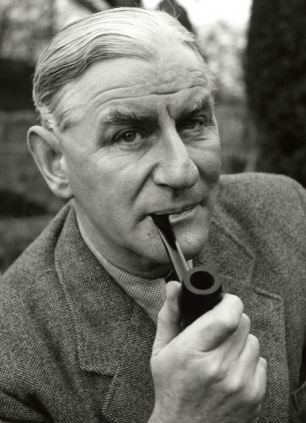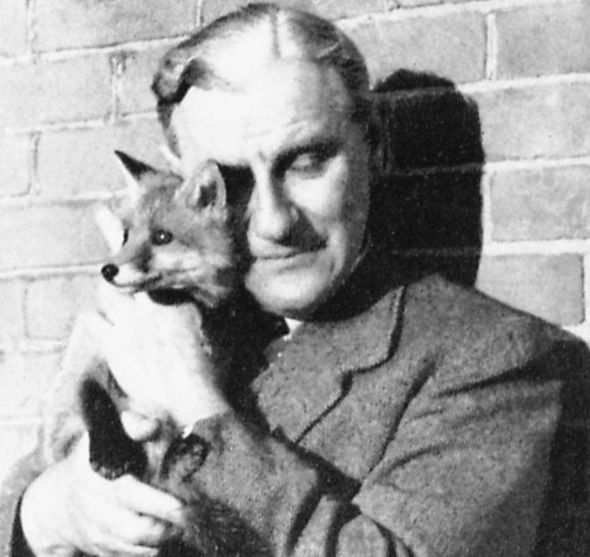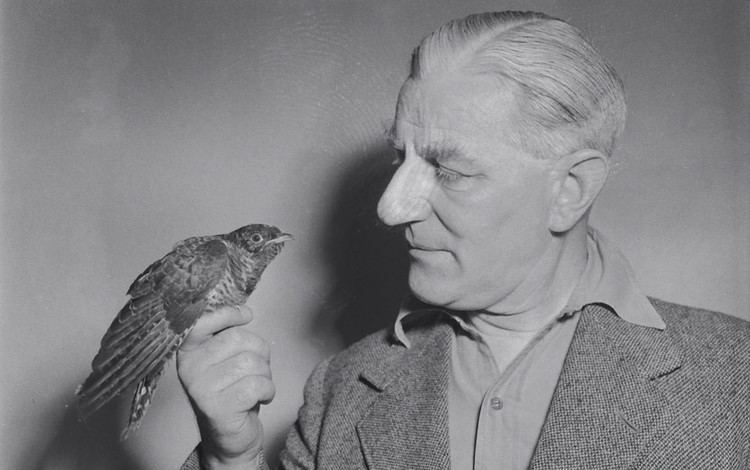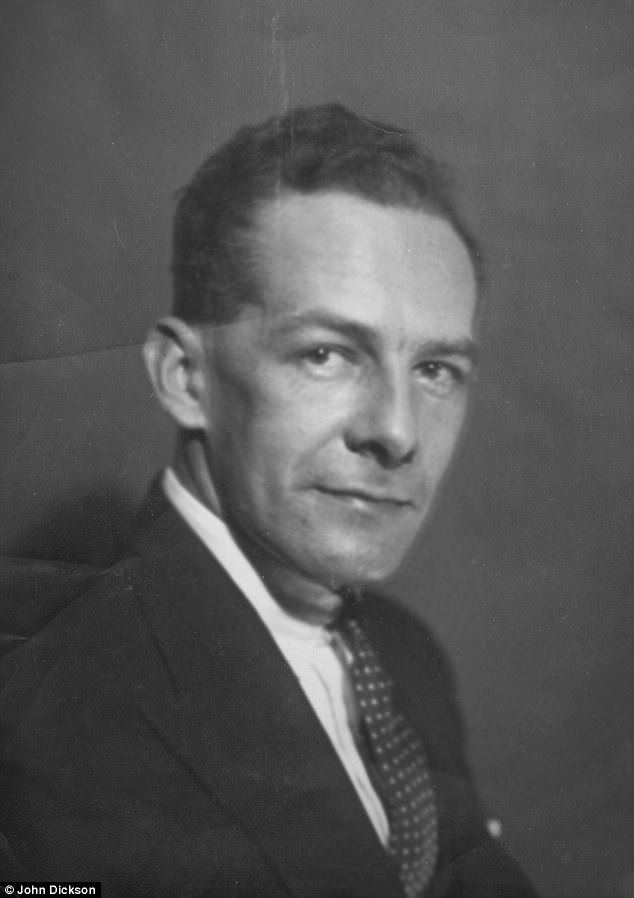Name Maxwell Knight | ||
 | ||
Spouse Gwladis Evelyn Amy Poole (m. ?–1936) Books Pets and Their Problems: A Guide for Animal Lovers Similar People Ian Fleming, George Martin, Robert Wade, Woody Allen, Sheryl Crow | ||
Maxwell knight actor showreel
Charles Henry Maxwell Knight OBE, known as Maxwell Knight, (b. South Norwood, 9 July 1900 – 27 January 1968) was a British spymaster, naturalist and broadcaster, reputedly a model for the James Bond character "M".
Contents
- Maxwell knight actor showreel
- Maxwell Knight Symposium 2018
- Origins and early life
- Spymaster
- Naturalist
- Death and legacy
- Detective fiction
- Natural history
- References

Maxwell Knight Symposium 2018
Origins and early life

Knight was the son of Hugh Coleraine Knight, a solicitor, and his wife, Ada Phyllis (née Hancock). He was christened in Holy Innocents Church, South Norwood on 3 August 1900, when his parents' address was given as No. 199, Selhurst Road, South Norwood.

Despite his age, he saw service during the First World War. Having been a naval cadet, he was appointed to the temporary rank of Midshipman in the Royal Naval Reserve on 2 May 1918.

In July 1918 he attended a hydrophone officers' course, and in August served for a short time as First Class Hydrophone Officer aboard the trawler, Ninus, until being admitted to hospital in Portland for treatment of sea sickness. On 1 September 1918 he was appointed to the armed merchant cruiser, HMS Andes. In December 1918 Captain C.T.H. Cooper of the Andes described him as "a promising young officer." He was demobilised in February 1919.

Having left the navy, he worked as a teacher in a preparatory school and as a freelance journalist.
He was married in Sherborne Abbey on 29 December 1925 to Gwladys Evelyn Amy Poole.
Spymaster
In an unpublished memoir, Knight recalled that he joined the first of the Fascist Movements in the United Kingdom, Rotha Lintorn-Orman's British Fascisti, in 1924, "at the request of the late Sir George Makgill who was then running agents on behalf of Sir Vernon Kell (Major General Sir Vernon Kell, Director General of the British Security Service, MI5). I remained with this organisation until 1930 when it more or less became ineffectual. My association with this body was at all times for the purposes of obtaining information for HM Government and also for the purposes of finding likely people who might be used by this department for the same purposes."
He served as the organisation's director of intelligence.
During the 1920s, on Knight's instructions, six British Fascists, posing as Communists, joined the Communist Party of Great Britain to work as penetrator agents for Makgill's section 2B.
In time Knight became MI5's chief 'agent runner', being deployed principally against the Communist Party. He rose to be head of section B5(b), responsible for infiltrating agents into potentially subversive groups, based for much of its existence at 308, Hood House, Dolphin Square in London, separate from the rest of MI5.
Joan Miller, who was recruited as an agent by Knight and had a close personal relationship with him, remembered that he felt very deeply about the threat of Communism: "his views on this subject, you might say, amounted almost to an obsession. He was equally adamant in his aversion to Jews and homosexuals, but prepared to suspend these prejudices in certain cases. 'Bloody Jews' was one of his expressions (you have only to read the popular novels of the period - thrillers in particular - to understand just how widespread this particular prejudice was)."
Notwithstanding this, Miller imagined Knight himself was a homosexual, although his third wife, Susi Maxwell Knight, rejected the allegation.
A respected case officer, Knight achieved notable successes with the infiltration of political groups, leading to the internment and imprisonment of fascists and fascist sympathisers regarded as a threat to the United Kingdom, such as Albert Williams, Percy Glading, [dubious assertion - Glading was a communist and prosecuted as such] George Whomack, Anna Wolkoff, Tyler Kent, leading anti-semite, Captain Archibald Maule Ramsay and Oswald Mosley.
During his career with MI5, Knight found that there was "a very long standing and ill-founded prejudice against the employment of women as agents", a position with which he did not agree. Indeed, many of his best agents were women. Agents working under him included Olga Gray (who infiltrated the leadership of the Communist Party of Great Britain), Joan Miller (who "penetrated the anti-semitic underworld of British Fascism"), and Tom Driberg.
His early warnings of communist infiltration of MI5 were not taken seriously. Patricia Craig notes that his paper, "The Comintern is not dead", which predicted with great accuracy the developments in Russia’s policy with regard to Britain after the war, "was dismissed as 'over-theoretical' by Roger Hollis, and various other Soviet experts considered it unimpressive." Moreover, when, in 1941 Anthony Blunt informed Harry Pollitt that Tom Driberg was an informer, and Driberg was expelled from the Communist Party, Knight developed the suspicion that his unit had been infiltrated by the KGB, but Blunt's treachery remained undiscovered for the time being.
A notable failure of Knight's section was the entrapment of Ben Greene, an anti-war activist, interned on the orders of the then Home Secretary, Sir John Anderson, as a result of false evidence given by Knight's agent provocateur, Harald Kurtz.
Having been gazetted as a Second Lieutenant on the Special List in September 1939, Knight was given the army rank of Major during the Second World War, but designated as a "Civil Assistant, General Staff, War Office." He was appointed as an Officer of the Civil Division of the Order of the British Empire in June 1943.
Ian Fleming, the author of the James Bond series of books, used an amalgam of Knight and his former superior Rear Admiral John Henry Godfrey, Director of the Naval Intelligence Division, as a model for the character "M," Bond's boss.
Apparently rejected and humiliated by Knight’s failure to consummate their marriage, his first wife took an overdose of barbiturates and died in 1934, leaving her large fortune to Knight. Knight was married, secondly, in 1937 to Lois Mary Coplestone, and thirdly, in 1944, to Susan Barnes ("Susi").
Naturalist
In 1946, Knight, who had been an ardent naturalist since childhood, began what was to become a successful broadcasting career on BBC radio, appearing in, and hosting such programmes as Naturalist, Country Questions and Nature Parliament. He appeared occasionally on television: in Peter Scott's Look and in Animal, Vegetable or Mineral.
He published 34 books and wrote many magazine articles on nature topics.
Knight conducted his broadcasting career alongside his work in intelligence, until 1956, when he retired early from MI5, on the grounds of ill health, suffering from angina.
Knight, who wrote of his pet cuckoo, 'Goo,' in A Cuckoo in the House (1955), was "one of many agents feeding into the phenomenon of British spies being bird enthusiasts. ‘Birdwatcher’ is old intelligence slang for spy. And the cuckoo – which infiltrates and imitates – was an ideal muse for a spy like Knight."
Fellow naturalist and Knight enthusiast, Helen Macdonald, writes that "the cuckoo’s life beautifully mirrored the concerns of Knight’s own. First, its sex life was mysterious and secretive. So was Knight’s: for years, he’d maintained a hearty heterosexual facade while picking up rough trade in local cinemas and employing local motorcycle mechanics for reasons other than repairing motorcycles. Second, cuckoos were the avian equivalents of the officer-controller of penetration agents; they ‘insinuated’ their ‘chameleon eggs’ into the nests of their ‘dupes’."
Spies and birders, she writes elsewhere, "have the same skills, the ability to identify, recognise, be unobtrusive, invisible, hide. You pay careful attention to your surroundings. You never feel part of the crowd."
Death and legacy
Knight spent his last years at "The Wing," Josselyns, Midgham, near Reading in Berkshire, where he died, from heart failure, on 24 January 1968.
He was survived by his third wife, Susi Maxwell Knight.
After his death, the Maxwell Knight Memorial Fund was set up, which provided for the Maxwell Knight Young Naturalists' Library in the education centre of the Natural History Museum.
In October, 2015, a hitherto unpublished 50,000-word manuscript, entitled The Frightened Face of Nature, written by Knight in 1964, and discovered by Professor John E. Cooper and Simon H. King in Knight's personal filing cabinet, was published in The Guardian, under the headline, "Spectre of destruction": The Lost Manuscript of the Real-Life 'M'
